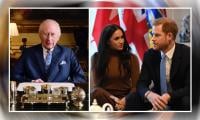AJK elections
As expected, the PTI won the majority in the AJK Assembly elections. The Kashmiri electorate continued the tradition of electing in the party that is ruling Islamabad. The PTI is now in a comfortable position to form the government in AJK.
From 1974 to 2021, election results in AJK clearly show that the party in power in Islamabad always has an advantage. The people of the region prefer to vote for the party in power in Islamabad because they depend on the federal government in Pakistan to get funds. They also look to the federal government for employment and development works.
The PML-N had won more than two-thirds of seats (31) in the 2016 elections because it was in power in Pakistan. In 2011, the PPP won half of the seats (21). In 2001 and 2006, MC won because General Musharaf supported it. The PPP won in 1996. So, it is not a surprise at all that the PTI has won.
History clearly shows that the undue advantage enjoyed by the ruling party in Islamabad is a big hurdle to providing an equal playing field for all contesting parties in AJK. This needs to be changed. The AJK Election Commission needs to be strengthened to organise free, fair and transparent elections.
The central government flouted the orders of the AJK EC to refrain federal minister Gandapur from campaigning. But he continued his election campaign and even addressed election rallies in the presence of PM Imran Khan. There are also concerns that federal ministers had announced development projects worth billions of rupees, thereby making the electorate more amenable to voting for the party in the centre.
The PTI grabbed 9 out 12 seats reserved for Kashmiri refugees living in Pakistan. These refugee seats gave clear majority to the ruling party; the PML-N won two while the PPP one refugee seat. The turnout was low on the refugee seats, which also brought the overall turnout down from 65 percent in 2016 to 58 percent in 2021.
The PML-N lost all five Gujranwala division seats which it had won in 2016 and 2011. The party also lost four Jammu refugee seats with a margin of nearly 500 votes.
Needless to say, the PTI government in Punjab managed the elections well. Now, as usual, the PML-N is alleging that the Punjab government influenced the elections, and used government resources and machinery to win the elections.
But that is what the PML-N did when it was in government. The PML-N also won 9 out of 12 refugee seats in the 2016 elections. It had the same advantage in 2016 which the PTI now has. Nothing has changed as far as election tactics and strategy is concerned. Every government takes advantage of its position but cries foul when out of power.
The fight was much closer in the 33 AJK seats. The PTI won 17 while the opposition parties won 16 seats. The PPP won 10 seats, PML-N 4, JKPP and MC won one each. The PTI won 26 seats more than those won by both the PPP and the PML-N combined. As far as the number of seats is concerned, it is a big win for the PTI which has won 58 percent of seats.
But when it comes to popular votes, the PTI just got 32.5 percent (613,590) of the total votes polled. More than 67 percent voters cast their ballots against the PTI candidates. The seats do not reflect the popular votes. When the PML-N won the 2016 elections, it got 44.4 percent popular votes and won 31 seats out of 41. The PPP also bagged more (5, 25,000) in 2011 at nearly 40 percent of the polled votes.
Even though the PML-N won just six seats, it secured 491, 091 votes (which is 25.65 percent of the polled votes). Despite a big political setback as far as number of seats is concerned, it is still the second most popular party in Azad Kashmir. Compared to 2016, the party bagged 2, 48,103 fewer votes but it got 25 less seats.
It is true that the PML-N has won fewer seats than it was expecting but it has not been routed out – as some political experts and analysts are giving the impression. It just failed to translate the popular votes into winning seats.
The incumbency factor was key in the poor showing of the PML-N. Many PML-N ministers and MLAs failed to fulfill their promises in the last five years. The poor performance of the PML-N government also contributed to the defeat. While the PPP won 11 seats and came second, in popular votes it finished third behind the PML-N – the PPP secured 349,895 votes (18.28 percent) of polled votes. It is pertinent to mention here the fact that in the 2016 elections, the PPP bagged 3, 52,742 votes – 21.2 percent of the votes polled – but won only three seats. In the 2016 elections, the PTI had secured 2, 11,827 votes (12.7 percent) but just won two seats.
Meanwhile, in these elections the Muslim Conference secured 8.4 percent of the total votes polled – at 153,861 – followed by independent candidates who secured 133,136 votes, 6.95 percent of the total votes cast. The Tehreek-e-Labbaik Azad Kashmir (TLPAJK) also secured 4.94 percent of the total votes which comes to 94,487 votes.
The disappointing aspect of this election campaign was that, instead of focusing on their political programme, manifestoes and ideas, the political parties focused on abuse, accusations and mudslinging. In fact, highly objectionable and abusive language was used during the campaigns. Instead of highlighting the Indian atrocities in Indian Occupied Kashmir and putting forward plans and strategy to highlight the Kashmir issue, personal scores were settled.
Federal Minister Ali Amin Gandapur used abusive and violent language against Maryam Nawaz, Bilawal Bhutto Zardari and PPP founder ZA Bhutto Shaheed. Each party targeted the leadership of other parties during the AJK elections. No political party bothered to publish and distribute its manifesto, though the PPP did announce its manifesto a couple of days before the July 25 elections in AJK.
The writer is a freelance journalist.
-
 ‘Entitled’ Andrew Mountbatten-Windsor Is Still Winding People Up: ‘That’s What He’s Used To’
‘Entitled’ Andrew Mountbatten-Windsor Is Still Winding People Up: ‘That’s What He’s Used To’ -
 Why Sarah Ferguson Will Not Leave Andrew Despite Ultimate Humiliation
Why Sarah Ferguson Will Not Leave Andrew Despite Ultimate Humiliation -
 Sylvester Stallone Stuns Internet In New Video
Sylvester Stallone Stuns Internet In New Video -
 Sophie Turner Talks About ‘nesting’ In Early 20s: ‘Big Break’
Sophie Turner Talks About ‘nesting’ In Early 20s: ‘Big Break’ -
 Brooklyn Beckham Claims Family Blocked Him First In Bombshell Statement
Brooklyn Beckham Claims Family Blocked Him First In Bombshell Statement -
 Sarah Ferguson Resorts To A Cynical Attempt At Survival And Runa Out Of Lives
Sarah Ferguson Resorts To A Cynical Attempt At Survival And Runa Out Of Lives -
 Nicole Kidman 'calm' And Focused After Keith Urban Split
Nicole Kidman 'calm' And Focused After Keith Urban Split -
 Prince Harry Deserves UK Security: ‘Didn’t Choose His Fate’
Prince Harry Deserves UK Security: ‘Didn’t Choose His Fate’ -
 Brooklyn Beckham Goes Public With His Side Of The Story Amid Feud With Family
Brooklyn Beckham Goes Public With His Side Of The Story Amid Feud With Family -
 Sarah Ferguson & Andrew Turn Volatile And Makes Buckingham Palace’s Biggest Fear Come True
Sarah Ferguson & Andrew Turn Volatile And Makes Buckingham Palace’s Biggest Fear Come True -
 Meghan Markle’s Laundry List Of Demands Finally Gets Answer By King Charles?
Meghan Markle’s Laundry List Of Demands Finally Gets Answer By King Charles? -
 Brooklyn Beckham Finds It 'hard' To Keep Contact With Sister Harper
Brooklyn Beckham Finds It 'hard' To Keep Contact With Sister Harper -
 New Mystery About 'Ring Nebula' Shock Astronomers: Here's Why
New Mystery About 'Ring Nebula' Shock Astronomers: Here's Why -
 Prince Harry Picks PR Photos In Fear Of ‘bald Spots’
Prince Harry Picks PR Photos In Fear Of ‘bald Spots’ -
 Saying Prince Harry Will ‘probably Be Fine Isn’t Good Enough’, Expert Speaks Out
Saying Prince Harry Will ‘probably Be Fine Isn’t Good Enough’, Expert Speaks Out -
 Inside Meghan Markle’s Plans ‘With Love, Meghan’: Season 3 And Valentines Day Specials
Inside Meghan Markle’s Plans ‘With Love, Meghan’: Season 3 And Valentines Day Specials



